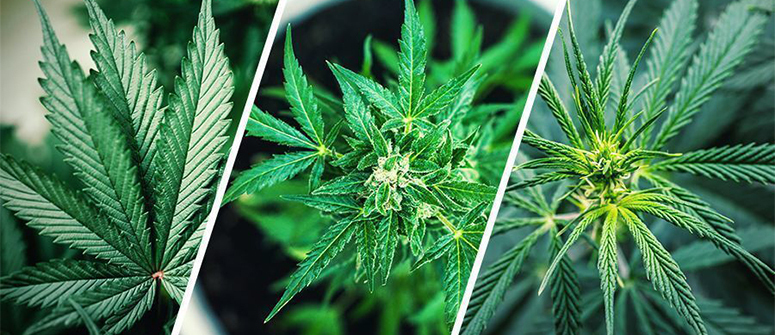Choose the perfect strain with the zamnesia seedfinder

Struggling to find a cannabis strain that matches your experience, grow space or climate? Well, despair no longer courtesy of the Zamnesia Seedfinder. To find out how the tool works and how it helps you pick the perfect strain, keep reading.
Growing your own cannabis crops can be a fulfilling venture. You’re granted the luxury of a garden or grow room filled with your favourite strains. And if it’s for personal use, you get the pleasure of getting high on your own supply.
But with that fun and fulfilment comes a lot of moving parts. And before everything else, you must first determine what strain you intend to grow.
Now, with the plethora of strains out there to choose from, you’ll likely be faced with a bad case of option paralysis. If you’re not familiar with which ones are out there, the task of choosing becomes a lot more challenging.
If you’re one of those faced with this particular quandary, fret no more. In this article, we’ll take you through the necessary steps to help you find your ideal strain.
Factors To Consider When Choosing a Cannabis Strain
Cannabis growing can be quite complex. Finding the right strain, for one, requires a good amount of evaluation and proper decision-making.
This process alone can be painstaking and time-consuming. So we’ve taken it upon ourselves to give you a guide to follow. Here are some factors to consider when picking out the ideal strain to grow.
Experience
As it is with any venture in life, there are levels to the cannabis-growing game. Beginners are more likely to make mistakes, particularly concerning some of the plant’s specific needs.
If you have very little to no experience, you’ll want a strain that requires minimal effort to grow. Autoflowering seeds are great for absolute beginners because they render fully bloomed flowers within a couple of months. And, they do not follow specific light cycles to bloom.
Now, if you’re a little more experienced and want to challenge yourself, you can go with feminized seeds. These won’t bloom until there is a change in their light cycle, so you’ll need to put in more work, but the yields are comparably higher than with autos.
Space
Ask yourself a simple yet highly important question: Are you planning to grow indoors, outdoors, or in a greenhouse?
Each of these growing spaces has its respective pros and cons concerning specific strains. If you’re growing indoors, you have to consider the plant’s height and yield potential, especially if you’re working in a tight space.
Growing outdoors gives you more freedom in terms of space, but you will need to consider the natural elements. There are specific strains that thrive in hotter environments, while some bode well in the cold.
Greenhouse growing is the happy medium between the two. You get a large space, along with the ability to control the environmental factors. Likewise, some strains are well-suited to greenhouse cultivation.

Climate
If you’re growing outdoors, certain seeds are better suited for a specific climate. If you live in a cold country like Russia or Canada, for example, find a fast-growing strain that won’t be deterred by moderate rainfall.
If you live in a Mediterranean climate, you’re dealing with two seasons: dry summers and wet winters. But in most cases, the wet season has limited rainfall. With that, you’ll also want a seed that doesn’t rely too much on rainwater.
Then there are countries with temperate climates, which have more wet seasons and fewer droughts. Some good examples are Spain, Mexico, and Greece. In this case, you’ll want a strain that thrives in cool and wet weather.
Now, if you don’t want to rely on Mother Nature, you can grow either indoors or in a greenhouse. With a more controlled environment, you can make the necessary adjustments.
Genetics
You don’t need to be too scientific with this. All you need is a general familiarity with the plant you’re growing.
There are three main types of cannabis plants: indica, sativa, and the less-favoured ruderalis (which works best when bred with the two aforementioned strain types, as it contains the autoflowering gene).
These strain distinctions have more to do with the size and growing specifics of a given plant, but can certainly help guide you in the right direction. For example, indicas usually grow short and bushy, and finish flowering in around 8–10 weeks. Sativas, on the other hand, tend to grow tall, spindly, and may take 12+ weeks to finish flowering.

Effects
Using the indica–sativa divide, you can also try to determine the effects of your chosen strain. Although indicas have long been associated with stoning body highs and sativas are thought to produce energetic and mood-boosting effects, realistically, terpenes and cannabinoids are most responsible for the variation in outcomes.
Most strains on the market today are hybrids of indica and sativa anyway, so you can benefit from the best of both worlds and find a high that offers everything you’re looking for. After that couch-lock effect? Look for heavy Kush-derived indicas with sleepy terpenes like myrcene and linalool. Fancy a high-flying buzz? Haze genetics containing limonene and other uplifting terps always provide the fun.
And, if you don’t want to be in an altered state of mind, you can choose to grow a CBD strain. You may feel subtle effects, but you won’t get high.
Cannabinoid Percentage
THC percentage has the most to do with how high you get with a given strain. For those who are in it mainly for recreational use, seek out buds with a higher THC content of 20%, 25%, or even 30%! This is about the max THC level you can achieve with homegrown bud.
For holistic cannabis users, on the other hand, look for strains with high CBD levels. Some may even prefer having some THC in the mix as well—just enough to feel that entourage effect between both cannabinoids.
Size
In the case of growing cannabis plants, size does matter. It will play a role in the growing environment you end up choosing, and your final yield.
Let’s make one thing clear: when we say smaller plants, we’re referring to height. There are many variants, mostly indicas, that are smaller in stature but yield large amounts of bud. They usually grow up to 60cm in height indoors and a little over a metre outdoors.
Medium-sized plants are a little taller, but can still fit in your home. These specimens grow up to 125cm indoors and up to 175cm outdoors.
Large plants can be problematic when grown indoors. Depending on your space, you’ll likely have a forest in your home once harvest season kicks in. You’re looking at a plant that can grow as high as 150cm indoors.
Flowering Time
Here, you’re looking at two strain types: photoperiod vs autoflowering. Basically, the former relies on the light cycle to bloom, while the latter does not.
Indoor photoperiod plants are typically grown under 18 hours of light and 6 hours of darkness, vegetating until growers switch the light cycle to 12/12.
Outdoor photoperiod seeds, meanwhile, tend to bloom according to the seasonal reduction in light hours during late summer and early autumn.
As mentioned, autoflowering seeds are most recommended to beginners. That’s because their growing time is consistent, regardless of the time of year. The wait for harvest time is also shorter and can happen within weeks.
How the Zamnesia Seedfinder Works
So now you know the key factors to consider when finding your ideal strain. But you’ll want to further streamline this process, and that’s where Zamnesia’s Seedfinder comes in.
Upon getting started, you’ll be asked a few questions about the above factors. Think of it like a Myers–Briggs personality test for your cannabis preferences. At the end of the questionnaire, you’ll be given a specific strain name based on your responses.
Go ahead and check it out for yourself! It should make finding your perfect cannabis strain a whole lot easier.




